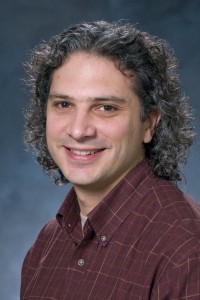A passion for pressure
Hittinger has helped improve laser-plasma interaction simulation codes, sometimes replacing or refining the hydrodynamic algorithms at their heart. He’s worked on adaptive mesh refinement (AMR) to focus computation on the most interesting areas, like where instabilities occur.
VALHALLA, one of Hittinger’s latest ICF projects, combines AMR with an efficient algorithm for solving the Vlasov-Poisson equations, which describe the self-consistent evolution of plasma particle distributions. The goal: cut the computational cost of simulations in phase space – up to three spatial and three velocity dimensions – to make such simulations practical. “We haven’t demonstrated yet that it’s absolutely going to give you a speedup” in computation, Hittinger says. That work continues.
Hittinger’s ICF work led him to magnetic confinement fusion, which trades a tiny pellet for a giant plasma cloud, hotter than the sun, swirling through a donut-shaped chamber called a tokamak. In the core, a magnetic field confines the plasma while radio waves heat it enough to strip away electrons and fuse hydrogen nuclei.
Hittinger works on kinetic models for the plasma edge, where the magnetic field doesn’t confine the plasma, which varies significantly. To be most efficient, the models’ computational grids should follow the magnetic field lines, Hittinger says. “Of course, the magnetic field is not a simple structure, especially in a tokamak and certainly not in an edge geometry.”
Nonetheless, COGENT, the code Hittinger is developing with researchers from LLNL and Lawrence Berkeley National Laboratory – including fellow DOE CSGF alumnus Daniel Martin – already has shown good agreement with some theoretical benchmarks. It uses high-order methods on mapped grids to solve the gyrokinetic Vlasov-Poisson equations, a plasma model suitable for an imposed magnetic field.
Besides his work on VALHALLA and COGENT, Hittinger’s also helped plan for the Fusion Simulation Program, a proposed multiyear, multi-institutional effort to develop a predictive, whole-device tokamak model. The project would couple codes portraying different physical properties, much as climate researchers join components into community models.
It’s a full plate for someone who didn’t picture himself at a national laboratory when he started graduate school. “If it weren’t for the CSGF, I probably wouldn’t have come to the lab,” Hittinger says. “I’m glad I did, because it fits my personality and my skill set. We do interdisciplinary things, and they’re hard problems. I don’t think there are many opportunities for that.”
About the Author
The author is a former Krell Institute science writer.





